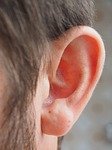Best Place For Ear Wax Microsuction Rough Common
Fascinating Facts Regarding Your Ears And Also Hearing: Hearing is among the body’s most innovative and remarkable senses. The complying with are ten interesting truths regarding our auditory system. Just a pick couple of gifted creatures on earth have generally evolved hearing organs. The majority of microorganisms have these hearing organs camouflaged as well as doing similar features. Human beings are an instance of such gifted animals. The human ear is a tool for valuing nature’s attractive melodies. On either side of the face, two ears lie in perfect consistency with the facial attributes. In addition, this essay will show you some interesting facts about the human ear. Get more info about Best Place For Ear Wax Microsuction Rough Common by clicking on microsuction canterbury.
Ear Wax Suction Canterbury Map And Directions
What Does Your Earwax Tell You About Your Health When You Go To Canterbury?
Ear wax likewise maintains ears (fairly) tidy. That waxy build-up is a hot combo of those lubricating secretions, sloughed skin cells as well as dirt and also dust entraped there while attempting to enter your ear. However think it or otherwise, essentially, it will certainly clean itself out. Every movement of the lower jaw, whether it’s chatting or eating, presses the wax towards the outside world– no cotton bud called for. Actually, attempting to tidy earwax can do more injury than good, if the wax is pushed further into the ear canal instead of removed. A lot of specialists agree you need to leave your earwax alone unless you’re experiencing signs of way too much earwax, which can include hearing changes, LiveScience reported.
How Can You Keep Your Ears Healthy When Visiting Canterbury?
Your earwax can tell you concerning your sweat. Some people produce wet earwax, while others remain completely dry. The white, half-cracked type most likely implies that you additionally lack a specific chemical in your sweat that results in body odour. Dark and also sticky earwax, nevertheless, implies you’ll want to keep deodorant handy. Earwax differs by race. That completely dry versus damp difference may have something to do with your ancestors, according to a recent research. Monell Center scientists located that, like with sweat, chemical substances in earwax vary in between the races, and the molecules that create a smell are normally greater in Caucasians than in East Asians. Stress or concern can raise earwax production. The glands in the ear that aid to produce wax are a course of glands called the apocrine glands, which are also in charge of your smelliest sweat. Just like anxiety can make you sweat extra (and also scent even worse), it (along with various other solid psychological feedbacks, like worry) can likewise up your earwax manufacturing, according to the American Speech-Language-Hearing Organization.
The Point Of The Outer Ear: Gathering Sounds
The most brittle bone: The temporal bone is the most brutal in the body. It secures the inner ear. The smallest bone in the body is likewise discovered in the ear. The stapes bone in the middle ear is the smallest in the human body. It belongs to the auditory ossicles. Assessment of the ear: Typically, the first test for an ear problem is merely looking at the ear. An otoscope is a gizmo that allows you to watch the tympanum through the ear canal. An audiologist evaluates a person’s hearing in each ear utilizing audios of varying amplitude and also frequency. Computed tomography (CT scan): A CT scanner develops photos of the ears and also surrounding structures making use of X-rays as well as a computer system.
The Function Of The Middle Ear: Transformer – Greater Than Meets The Ear!
This set is type of great, and also it’s less regarding wellness than it is genes (though both aren’t constantly mutually exclusive.) In an article released in the journal Nature Genetics, scientists found that the uniformity of our earwax can hint us know our origins. Extra especially, the climate (thereby, place) in which our forefathers lived. Ear wax is a completely natural wax-like substance, produced by special glands in the skin on the external part of the ear canal. Earwax helps in pushing back water as well as capturing little dust and also dust bits from entering your internal ear canal. When you think about it, it’s kind of unusual how much the “gross stuff” our bodies create can tell us regarding our health and wellness. A saliva sample can spot anaemia; faeces can pinpoint various sorts of cancer; pee can find troubles of the bladder, kidney and prostate … and so on. Turns out that our earwax can likewise inform us quite a bit. Initially, we’ll speak a little bit concerning right stuff and why it exists.
The Raison D’Etre Of The Inner Ear: Nerve Signals Start Here
After that we’ll discuss what earwax informs us concerning our wellness. What is earwax? As its name implies, earwax is a yellow waxy secretion of the ear. It is created by the cerumen (Se-roo-men) glands beneath the skin of the exterior ear canal (the part situated between the fleshy and also center parts of the ear). When the majority of us (including this author) consider earwax, we just consider it as some unpleasant byproduct that needs a Q-tip occasionally. In fact, earwax is quite important.– It moisturizes and secures the skin.– It prevents dry, itchy ears; particularly within the ear canal.– It consists of chemicals that fend off prospective ear infections.– It assists prevent damage to the tympanum by reducing outdoors sound.– It catches dirt, dust and other foreign agents that go into the ear canal.
Get more info at this link
The noticeable part of the pinna is described as the auricle or auricula. The auricle’s grooves and also ridges supply an all-natural volume enhancement for audios in between 2000 and 3000 Hz, which encompasses most consonant speech sounds. The ear canal, conversely referred to as the exterior auditory canal, is another noticeable attribute of the outer ear. The ear canal is an extremely vascularized location with only a few layers of skin as well as great hairs. This suggests that the ear canal receives a bountiful supply of blood. The ear divides right into 3 areas: the outside ear, the center ear, as well as the inner ear. the center ear, as well as the inner ear. These components all function together to assist you in hearing as well as processing audios. The eardrum– a slim layer of skin that shakes in reaction to acoustic wave– divides the outer as well as middle ears. This page discusses center ear infection (otitis media), a problem in which the air-filled area listed below the tympanum comes to be infected/inflamed. This location can become obstructed with mucous (fluid), which can obtain contaminated and create swelling.
Perinatal assessment of the tympanic membrane is executed to identify the tube’s patency and, possibly, function. A normal-appearing tympanic membrane often recommends a normal-functioning Eustachian tube, although this does not eliminate the possibility of a patulous tube. Otoscopic evidence of tympanic membrane retraction or liquid in the center ear suggests a Eustachian tube breakdown however can not identify it from mechanical blockage of television. Regular tympanum motion throughout pneumatically-driven otoscopy (Siegalisation) shows that the Eustachian tube remains in good condition. The middle ear is a hollow dental caries filled with air that transforms acoustic waves to resonances and also sends them to the internal ear. The eardrum or tympanic membrane divides the internal ear from the external ear.
The tympanum is a tiny item of cells that is firmly wrapped around the ear canal. Seems strike the tympanum, creating it to vibrate. This action produces vibrations in 3 small bones situated in the center ear. The mammalian ear is divided right into three sections: the external ear, which receives sound waves; the middle ear, which transfers resonances through a series of three tiny bones; and the inner ear, or internal ear chamber, which is a complex chamber of bones situated deep within the head. The outer ear comprises the outside acoustic canal and the recently produced pinna, a cartilaginous framework that sticks out from the ear. The pinna is rather variable in shape and also size. The pinna’s acoustic feature differs substantially in between pets. The pinna is pushed toward an audio source in some animals, assisting the pet in concentrating on the exterior acoustic canal and also ultimately guiding it right into the ear canal.
If it’s eco-friendly and watery There are just one of two reasons your earwax appears green as well as watery. First, if you have actually been sweating for any kind of factor (e.g. workout), it’s all-natural for the perspiration to make its means into the ear canal as well as combine with the wax, causing a watery, green discharge. Or, you have an ear infection. Besides a greenish tint, an ear infection may additionally produce a charming dark yellow liquid blend. Below’s afterward when it’s probably a great suggestion to see the doc. A tendency to (actually) pulls at your hair, eyebrows, or lashes when you obtain worried can signify a nit-picker personality, suggests a Canadian research in the Journal of Behavioral Therapy and Experimental Psychiatry. The scientists explain it this way: When you don’t meet your own impossibly high requirements, hair pulling can be a means of easing irritation and also frustration. Yet this dealing technique goes a little much deeper than common perfectionism– it’s an uncontrollable disorder called trichotillomania, as well as if you have actually got it, cognitive behavioral therapy (learning a less frustrating means to arrange your workflow as well as take care of aggravation) might aid.
 Wax accumulation can be discouraging and keep you from hearing at your finest trying to eliminate an ear wax blockage by yourself in your home can make the circumstance even worse. The microsuction ear wax removal network offers ear wax removal services in hinckley in one of our centers– baker street hinckley nw1, pinner north west hinckley ha5, enfield north hinckley en1, edgware north hinckley nw7, east finchley north hinckley nw2, golders green north hinckley nw11, ealing west hinckley w5, barnet north hinckley en5.
Wax accumulation can be discouraging and keep you from hearing at your finest trying to eliminate an ear wax blockage by yourself in your home can make the circumstance even worse. The microsuction ear wax removal network offers ear wax removal services in hinckley in one of our centers– baker street hinckley nw1, pinner north west hinckley ha5, enfield north hinckley en1, edgware north hinckley nw7, east finchley north hinckley nw2, golders green north hinckley nw11, ealing west hinckley w5, barnet north hinckley en5.  Earwax removal can be an extremely important service for hearing aid users. Quite often earwax can build up in the canal of a hearing aid user to the point of totally obstructing it. Hearing aids do not work extremely well for people with blocked ear canals. They frequently feedback (whistle) and the user does not get the full benefit of amplification. The traditional way to remove earwax was to utilize an earwax conditioner for a couple of days, something like medical grade olive oil or among the brand of wax conditioners.
Earwax removal can be an extremely important service for hearing aid users. Quite often earwax can build up in the canal of a hearing aid user to the point of totally obstructing it. Hearing aids do not work extremely well for people with blocked ear canals. They frequently feedback (whistle) and the user does not get the full benefit of amplification. The traditional way to remove earwax was to utilize an earwax conditioner for a couple of days, something like medical grade olive oil or among the brand of wax conditioners.  This is when you start to have problems, usually, the first indicator of it for you is when water gets into the ear during swimming or showering. This typically causes the ear wax to swell. This blocks the ear canal and you know about it immediately. If the wax build-up has got to the phase where it is causing deafness, problems with listening devices, or is uncomfortable, it needs to be removed. There are a number of kinds of ear drops that you can utilize to loosen up and soften ear wax.
This is when you start to have problems, usually, the first indicator of it for you is when water gets into the ear during swimming or showering. This typically causes the ear wax to swell. This blocks the ear canal and you know about it immediately. If the wax build-up has got to the phase where it is causing deafness, problems with listening devices, or is uncomfortable, it needs to be removed. There are a number of kinds of ear drops that you can utilize to loosen up and soften ear wax.  The microscope is used to straight imagine the ear wax whilst it is being removed utilizing ent micro-instruments (e. G. Gentle suction with a low-pressure suction device and fine sterile probe (microsuction)). Although the ear has a natural system for the removal of wax it is acknowledged that particular people do experience problems with build-up of excess wax that might require additional help. Aspects such as narrow, hairy or blocked ear canals, hearing aid or earplug use, as well as dusty/dirty professions all contribute to an accumulation of earwax and utilizing cotton swab only serves to push the debris back in even more, frequently impacting the wax while doing so.
The microscope is used to straight imagine the ear wax whilst it is being removed utilizing ent micro-instruments (e. G. Gentle suction with a low-pressure suction device and fine sterile probe (microsuction)). Although the ear has a natural system for the removal of wax it is acknowledged that particular people do experience problems with build-up of excess wax that might require additional help. Aspects such as narrow, hairy or blocked ear canals, hearing aid or earplug use, as well as dusty/dirty professions all contribute to an accumulation of earwax and utilizing cotton swab only serves to push the debris back in even more, frequently impacting the wax while doing so. 

 We make use of expert ear clearing devices such as a Video Otoscope as well as ENT tools to clear ear wax The uniformity of your ear wax will establish which of the procedures listed below we will use to remove your ear wax.
We make use of expert ear clearing devices such as a Video Otoscope as well as ENT tools to clear ear wax The uniformity of your ear wax will establish which of the procedures listed below we will use to remove your ear wax.

 Why do we need ear wax? Ear wax is a normally taking place material which helps in the feature and defense of the ear. Some people nevertheless, generate huge amounts which may require to be removed if it creates troubles. What is Microsuction? This is a treatment utilizing a microscope, where the expert utilizes a little metal suction tube to eliminate ear wax. It is a much safer option to ear syringing.
Why do we need ear wax? Ear wax is a normally taking place material which helps in the feature and defense of the ear. Some people nevertheless, generate huge amounts which may require to be removed if it creates troubles. What is Microsuction? This is a treatment utilizing a microscope, where the expert utilizes a little metal suction tube to eliminate ear wax. It is a much safer option to ear syringing. Occasionally however, you will require help with getting rid of an accumulate of ear wax as well as we are qualified to carry out Ear Wax Elimination for you rapidly and also securely.
Occasionally however, you will require help with getting rid of an accumulate of ear wax as well as we are qualified to carry out Ear Wax Elimination for you rapidly and also securely.



 Impaired hearing
Impaired hearing